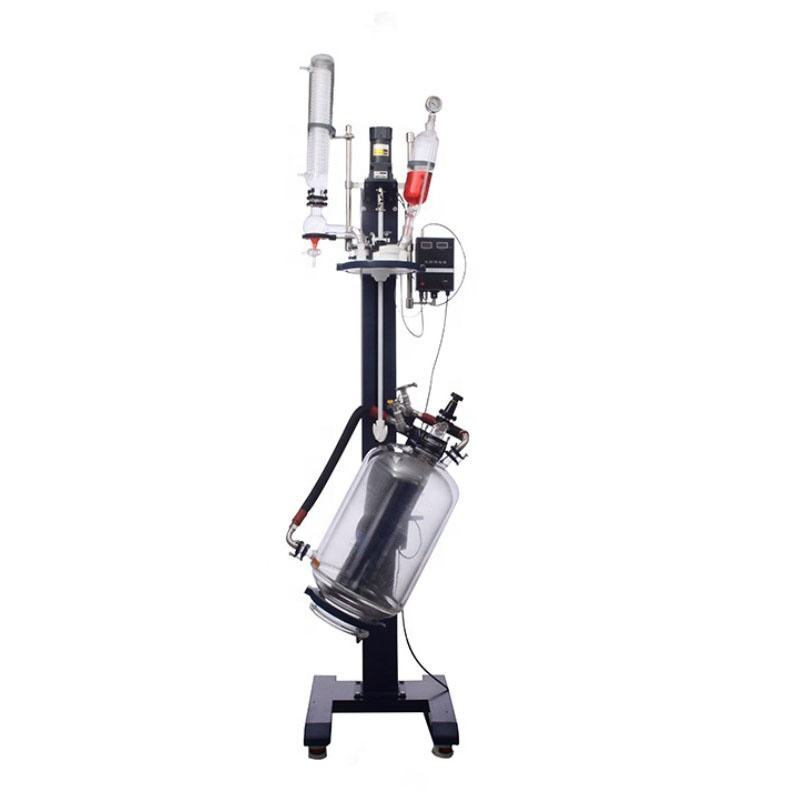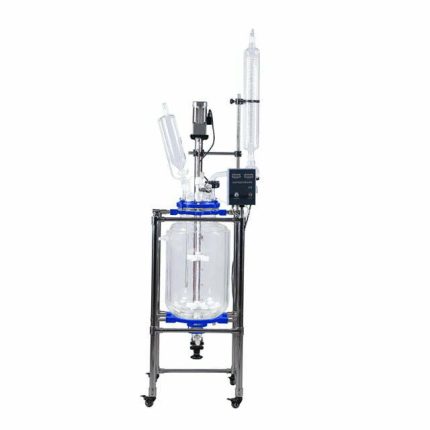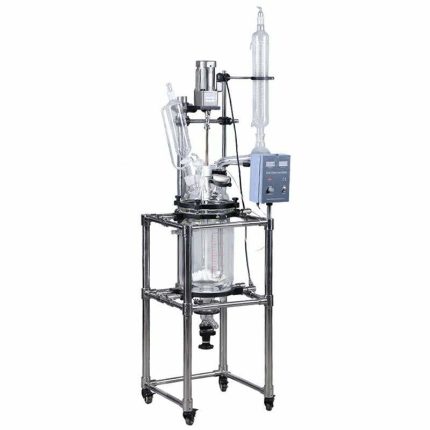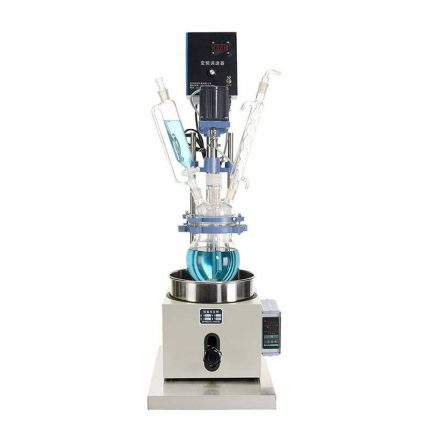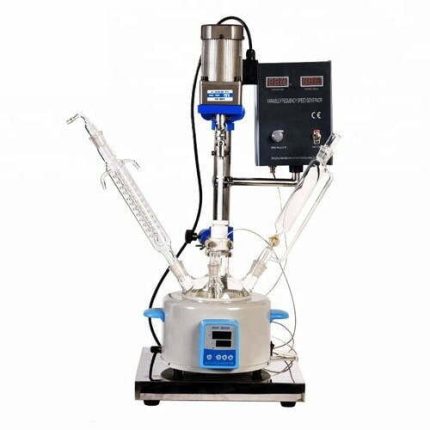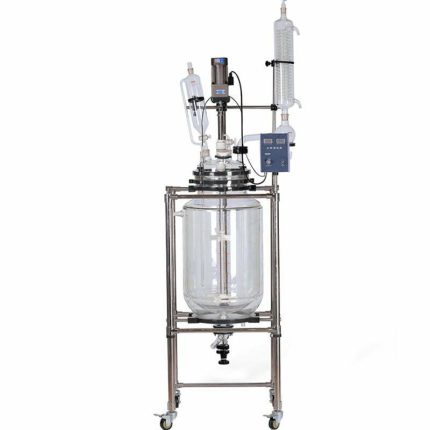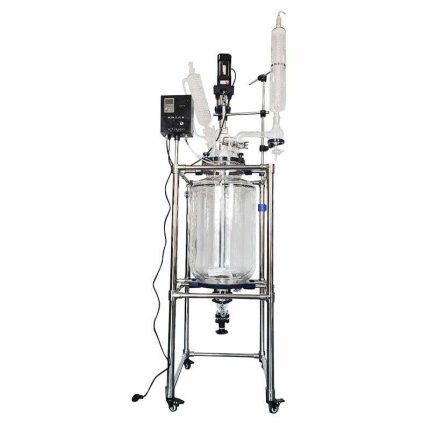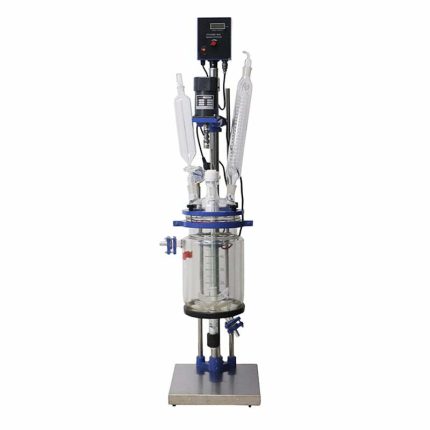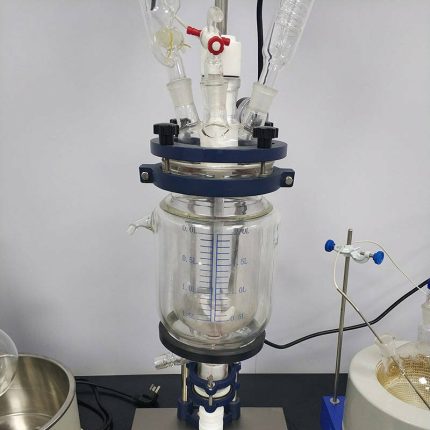5L Pilot Chemical Laboratory Lifting Vacuum Glass Reactor With Lifting-rotating Kettle
( Lifting ) Glass reactors are widely applied in the experiment, middle-scale test, and production of chemistry, fine chemical engineering, biological pharmacy and synthesis of new materials. Glass reactors can be made into system devices with multi-purpose circulating water vacuum pump, diaphragm vacuum pump, low temperature circulating pump(vacuum), circulating cooler, constant temperature circulator, low temperature cooling liquid circulating pump, high temperature heating bath circulator and hermetic cooling and heating circulator.
( Lifting ) Glass reactors are mainly used for synthetic reaction, distillation and concentration of different types of materials. We have single wall, double wall and triple wall glass reactors. The reactor can be pumped to a negative pressure state according to some experimental requirements. A constant pressure funnel or an adjusting valve on the feeding bottle allows you to add material to the vessel at a uniform and controlled speed. Condenser helps to recover some materials distillated during reaction. Circulating liquid can be filled into the jacket to heat or cool materials inside. Triple wall glass reactor with two jackets, the inner jacket is for circulating liquid, and the outer layer should be pumped to vacuum condition for thermal insulation.
Dumpable Lift Jacketed Glass Stirr Reactor Maintenance Instructions:
1. Carefully check the instrument before use, whether the glass bottle is damaged, whether the interfaces are consistent, and pay attention to handle it with care.
2. Wipe each interface with a soft cloth (can be replaced with a napkin), and then apply a little vacuum grease. (Be sure to cover the vacuum grease after use to prevent lime sand from entering.)
3. The interfaces of the glass reactor should not be tightened too tightly, and should be loosened regularly to avoid long-term locking that would cause the connector to be killed.
4. Turn on the power switch first, and then let the machine run from slow to fast. When the machine is stopped, keep the machine in a stopped state, and then turn off the switch.
5. The PTFE switches everywhere should not be over-tightened, which will easily damage the glass.
6. After each use, all kinds of oil stains, stains and solvent residues left on the surface of the machine must be wiped off with a soft cloth to keep it clean.
7. Unscrew each PTFE switch after stopping, and the PTFE piston will be deformed if it is still in the working state for a long time.
8. Clean the sealing ring regularly. The method is: remove the sealing ring, check whether there is dirt on the shaft, wipe it with a soft cloth, then apply a little vacuum grease, and then reinstall it to keep the shaft and the sealing ring smooth.
9. The electrical part must not enter the water, and it is strictly forbidden to get wet.
10. It is necessary to purchase genuine parts from the original factory. The random use of other parts will cause fatal damage to the machine.
11. When doing any repairs or inspections to the glass reactor, be sure to cut off the power supply and water source first.
Dumpable Lift Jacketed Glass Stirr Reactor Precautions:
1. All glass parts should be cleaned before installation.
2. Each standard port, ball grinding port and sealing surface should be coated with a small amount of vacuum silicone grease to increase air tightness.
3. Before installation, use, maintenance, and inspection, be sure to read all the contents of this manual carefully and use it correctly. 4. The power supply voltage must be consistent with that specified by the instrument.
5. No-load operation is not suitable for high-speed operation.
6. The life of the electrical box is greatly affected by the surrounding temperature and humidity. Keep the governor and motor dry.
7. Install the reactor equipment first, and then operate the equipment by professional operators.
